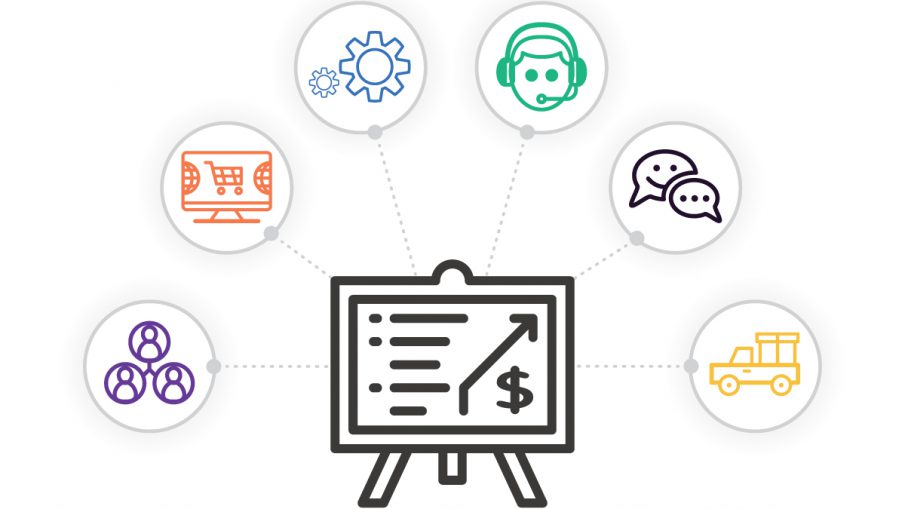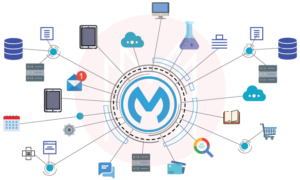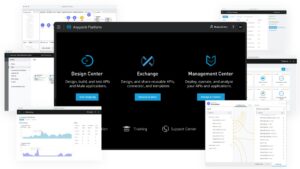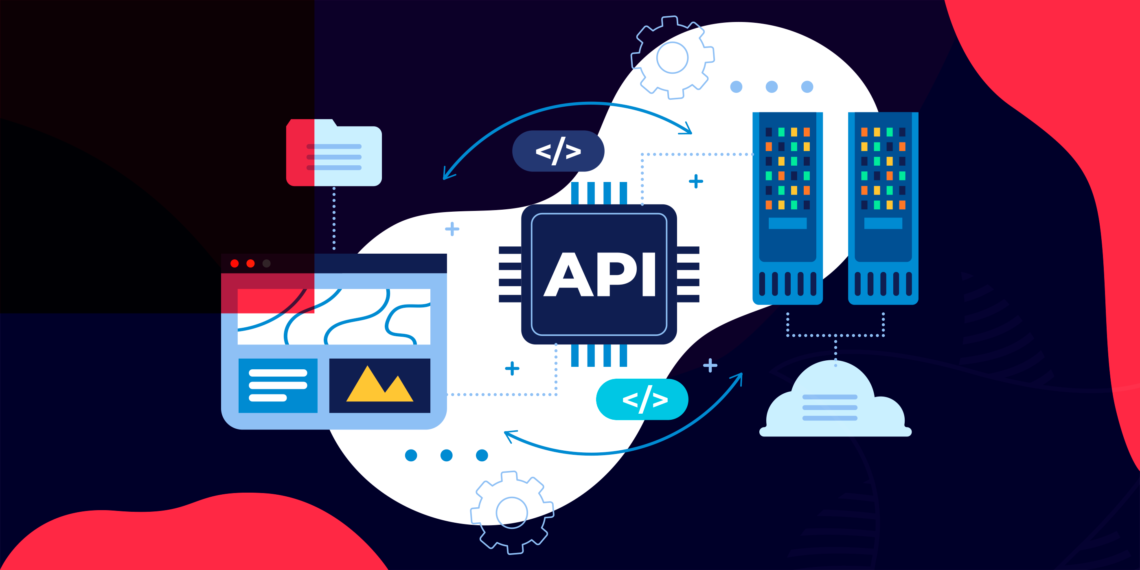In this article, you will discover the world of system integration and its significance for businesses everywhere. We will also explore the exceptional capabilities of MuleSoft, the leading integration platform that empowers businesses to achieve remarkable success.
Check out the table of contents for this article:
- What is System Integration?
- Why do you need System Integration?
- What is MuleSoft?
- MuleSoft Anypoint Platform
- How we can help you begin your journey with MuleSoft
- Final notes
1. What is System Integration?
System integration is the process of connecting systems or applications to establish communication and collaboration. Bringing together diverse sub-systems allows organizations to create a unified and cohesive ecosystem that enables faster information flow and reduced operating costs, extending beyond internal systems to connect with third-party entities.
Now that we have a general understanding of system integration, let’s explore the various types and approaches of integration that you may encounter and leverage.

1.1 Key Types of System Integration
While there are numerous types of system integration, the following are the most prevalent:
- Data Integration
Data integration involves combining data from multiple sources, such as services, platforms, and databases, into a centralized access point. By doing so, businesses have readily available and easily processable data for their systems and users.
- Business-to-Business Integration (B2B)
B2B refers to integration of business processes, systems and data between two or more organizations. It enables efficient communication and exchange of critical business data in real-time.
- Electronic Document Interchange (EDI)
EDI focuses on the exchange of business documents, like invoices or purchase orders, between partners electronically and in a standardized way. It enables automated communication saving time and minimizing errors that can occur with manual processing of paper-based documents.
- Enterprise Application Integration (EAI)
EAI focuses on bridging gaps between core systems, such as ERP, CRM, and SCM, to streamline business processes. It enables seamless data exchange from one point to another, enabling efficient collaboration across various systems.
- Legacy System Integration
Legacy system integration focuses on integrating older and legacy systems, are crucial for business operations, with modern applications or systems. This guarantees uninterrupted communication between different components and prevents any interruptions in the company’s workflow.
1.2 Challenges in System Integration
While system integration is not impossible, it poses various challenges for organizations. According to 2023 Connectivity Benchmark Report, integration is still a persistent barrier for 80% of organizations. These challenges need to be address in order to ensure a successful system integration. Some of the common challenges include:
- Scalability and Performance
- Data Incompatibility
- Organizational Alignment
- Dependency Management
- Security and Privacy
- Lack of Resources
- Maintenance and Support
But why do companies need system integration, and what are the advantages of having such integration? Find out the answer to these questions in the following sections.
2. Why do you need System Integration?
Integrating systems is one of the most challenging business topics in today’s fast-paced world. They invest heavily in finding a solution that efficiently brings their plans together and avoids scattered data across their applications.
But what are the real benefits of having system integration?
- It enables efficient data sharing and synchronization, ensuring accurate information across systems. This leads to a reduction of manual tasks, improved data quality and a reduction of potential errors.
- It optimizes processes by automating workflows and tasks and eliminating the need for manual intervention, increasing operational efficiency and freeing people to work on higher-value tasks.
- It enables real-time data exchange, empowering teams to make informed decisions faster. This provides a holistic view of business operations, enabling better tracking of KPIs and improving responsiveness.
- Furthermore, system integration reduces operational costs by eliminating the need for duplicate data insertion and validation and manual and time-consuming operations. Companies can reallocate resources more effectively by streamlining business and technical processes and enhancing efficiency.
Achieving these benefits requires a clear and robust integration strategy to support your current needs and anticipate the future demand for change. This is where MuleSoft comes in.
3. What is MuleSoft?

MuleSoft is a Salesforce company that provides a unified solution for automation and integration that enables businesses to create integrations between their systems. It provides a robust integration solution that allows you to build effective integrations, accelerating integration projects and achieving faster time-to-value. Embarking on MuleSoft integration can present its fair share of challenges. However, if you’re seeking practical solutions to conquer these hurdles, we have an insightful article that delves into tackling the five key challenges of digital transformation.
It offers several products and services in the spectrum of integration and automation, including an extensive library of pre-built connectors and APIs, empowering organizations to connect their systems efficiently.
The main products we will explore are MuleSoft Anypoint Platform, MuleSoft Composer and MuleSoft RPA.
We will delve into the #1 platform for APIs and integrations, the MuleSoft Anypoint Platform.
4. MuleSoft Anypoint Platform
Anypoint Platform is an integration and API management platform that enables organizations to connect applications, systems and data sources seamlessly. It offers tools and features for designing, developing and deploying integrations.

These are the key components of the MuleSoft Anypoint Platform:
-
Anypoint Design Center
- Anypoint Design Center is a web-based graphical interface that enables developers to design and document APIs. It offers a visual editor for creating API specifications in RAML/OAS/AsyncAPI, standardising design with real-time governance checks and validating them with simulated behaviour in mocking service.
-
Anypoint Exchange
- Anypoint Exchange is a repository for APIs, templates and pre-built connectors. Developers can utilize this platform to easily find, share, and reuse integration assets, which streamlines project implementation and promotes the incorporation of best practices.
-
Anypoint Management Center
- Anypoint Management Center is a web-based console with a centralized view for managing and monitoring APIs. With Management Center, users can configure, deploy, monitor, control access, and apply security to their APIs and integrations. Some key features include Anypoint Runtime Manager, API Manager, and Monitoring, which we will explore more in detail below.
-
Anypoint Runtime Manager
- Anypoint Runtime Manager is a feature with a single view for applications and APIs. You can easily manage and keep track of your applications and APIs, whether you have them hosted on CloudHub (a platform-as-a-service feature of Anypoint Platform) or your servers. Deploying, managing, and monitoring is made simple.
-
Anypoint API Manager
- Anypoint API Manager is a feature to manage APIs throughout their life cycle securely. It allows users to secure APIs, control access and apply usage policies, features like versioning documentation, and the ability to create developer portals to enhance API governance and consumption.
-
Anypoint Monitoring
- Anypoint Monitoring is a feature that enables real-time visibility into the health of an organization’s application network. It provides mechanisms to enhance performance monitoring, traceability and troubleshooting of integrations and APIs in a single place.
-
Anypoint Studio
- Anypoint Studio is an integrated development environment (IDE) that provides a graphical interface to build, test and deploy APIs and integrations. It is loaded with out-of-the-box components and templates that facilitate and accelerate business logic implementation and system connection.
-
Anypoint Code Builder (BETA)
- Finally, the most recent tool for developers: Anypoint Code Builder, is MuleSoft’s brand new IDE for developers to design, implement and deploy APIs and integrations. Although it’s still in beta, users can access it through the Anypoint Platform. It is based on the Visual Studio Code experience with a modern design and is available for web and desktop versions.
6. How we can help you begin your journey with MuleSoft
Luckily, we have the power to transform your business! How? We focus on three different aspects:
-
Integration
Our team can assist you with MuleSoft’s Anypoint Platform, which enables seamless connectivity between applications, data, and devices, regardless of whether on-premises or in the cloud. You can accelerate their digital transformation initiatives by adopting an API-led approach and integrating MuleSoft with Salesforce.
With our Integration and API expertise and ever-growing know-how in Salesforce and MuleSoft, you can expect a smooth implementation of systems to support future transformation challenges and a higher return on your investment.
-
API Management
With Universal API, you can combat API sprawl by managing and securing any API built and deployed anywhere. We will help you protect your resources and accelerate your business!
-
Automation
With MuleSoft Composer, MuleSoft RPA, and the Anypoint Platform, you can start automating across modern cloud apps, legacy on-prem apps, and unstructured data like documents and images. We automate workflows to improve the customer-facing experience with low-code solutions!
If you’re interested in a project with us, contact us! We would love to hear more about your business.
7. Final notes
System integration is vital for businesses to thrive in today’s interconnected digital landscape. Organizations can enhance efficiency, streamline operations, and make informed decisions by seamlessly connecting systems, applications, and data sources. MuleSoft, with its robust capabilities and integration platform, empowers businesses to achieve seamless connectivity and unlock the full potential of their digital ecosystem. Embrace system integration and leverage the power of MuleSoft to drive your organization’s success in the digital age.
If you want to keep learning about the power of system integration and MuleSoft, don’t forget to subscribe to our Knowledge Center to keep yourself updated and find more content on these topics in our blog’s Integration & MuleSoft section.







